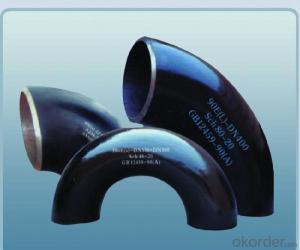Stainless Steel Double Boiler
Stainless Steel Double Boiler Related Searches
Best Paint For Stainless Steel Paint For Galvanized Steel Steel Frames For Furniture Self Tapping Screws For Steel Surface Grinding Wheels For Hardened Steel Hole Saw For Stainless Steel Paint For Stainless Steel Stainless Steel For Bbq Step Bit For Stainless Steel Sponge For Stainless SteelHot Searches
Cheap High Tea Sets For Sale Portable Led Signs For Sale Stone Hot Water Bottles For Sale Large Led Screens For Sale 1/4 Aluminum Plate For Sale H4 Led Headlight Bulbs For Sale Air Pump For Aquarium Price Inverter Size For Solar System Solar Thermal Collectors For Sale Used Finger Joint Machine For Sale Aluminum Dock Plate For Sale Aluminum Plate For Sale Near Me Solar Chips For Sale Solar Business For Sale Solar Controllers For Sale Pipe Staging For Sale Aluminum Stock For Sale Near Me Used Electrical Wire For Sale 6 3 Electrical Wire For Sale Steel Mesh Panels For SaleStainless Steel Double Boiler Supplier & Manufacturer from China
Okorder.com is a professional Stainless Steel Double Boiler supplier & manufacturer, offers integrated one-stop services including real-time quoting and online cargo tracking. We are funded by CNBM Group, a Fortune 500 enterprise and the largest Stainless Steel Double Boiler firm in China.Hot Products
FAQ
- Stainless steel pipes and polypropylene pipes are both popular options for various plumbing and industrial uses, but they have distinct qualities that set them apart. To begin with, stainless steel pipes are renowned for their exceptional durability and strength, allowing them to withstand high pressure and temperature conditions. This makes them suitable for applications that require robustness and reliability. Conversely, polypropylene pipes may not be as strong as stainless steel and may not be suitable for high-pressure environments. Moreover, stainless steel pipes possess excellent corrosion resistance properties, making them highly resistant to rust, corrosion, and chemical reactions. This makes them ideal for plumbing systems that handle corrosive fluids or gases. In contrast, polypropylene pipes, although resistant to many chemicals, may not offer the same level of corrosion resistance as stainless steel pipes. Furthermore, stainless steel pipes provide excellent hygiene and cleanliness due to their smooth interior surface, which discourages the growth of bacteria and biofilm. This makes them suitable for industries such as food and beverage or medical facilities. On the other hand, polypropylene pipes, while relatively resistant to bacterial growth, may not provide the same level of cleanliness as stainless steel. Additionally, stainless steel pipes are known for their longevity and low maintenance requirements. They have a longer lifespan compared to polypropylene pipes, which may need to be replaced more frequently. Stainless steel pipes also require less maintenance and are less prone to leaks or cracks. However, it is important to note that polypropylene pipes have their own advantages. They are lightweight, easy to install, and relatively cost-effective compared to stainless steel pipes. Polypropylene also possesses excellent thermal insulation properties, which can be beneficial in certain applications. Ultimately, the choice between stainless steel pipes and polypropylene pipes depends on the specific requirements of the project. Factors such as pressure, temperature, corrosion resistance, cleanliness, and budget should be taken into consideration to determine the most suitable option. Seeking advice from a professional plumber or engineer can assist in making an informed decision.
- Generally, stainless steel pipes resist chloride stress corrosion cracking. Stainless steel is well-known for its ability to resist corrosion, even in chloride environments. The presence of chromium in stainless steel creates a protective layer on the surface that shields it from corrosion. This layer stops chloride ions from penetrating and reduces the risk of stress corrosion cracking. However, the resistance to chloride stress corrosion cracking can vary depending on the particular grade of stainless steel and the surrounding conditions. Therefore, it is crucial to select the appropriate stainless steel grade that offers sufficient resistance to chloride stress corrosion cracking for specific applications, particularly in high chloride environments like coastal areas or industrial settings.
- Stainless steel pipes are indeed suitable for wastewater treatment. This material, known for its resistance to corrosion, brings numerous advantages to applications in wastewater treatment. It is highly durable and can withstand exposure to aggressive chemicals and abrasive substances typically found in wastewater. Moreover, stainless steel pipes do not rust, ensuring a longer lifespan and minimizing the chances of pipe failure. In addition, stainless steel is inert and non-reactive, making it ideal for transporting and containing various types of wastewater without any risk of contamination. The smooth surface of stainless steel pipes also prevents the accumulation of deposits and biofilm, reducing the likelihood of clogging and allowing for the efficient flow of wastewater. All in all, stainless steel pipes present a dependable and sustainable choice for wastewater treatment systems.
- The wall thickness and pressure ratings distinguish Schedule 20 and Schedule 40 stainless steel pipes. Schedule 20 pipes, with their thinner walls, possess a greater internal diameter, facilitating a higher flow rate of liquids or gases. Ideal for residential plumbing or light-duty industrial applications, they suffice for lower pressure ratings. Conversely, Schedule 40 pipes boast thicker walls compared to Schedule 20 pipes. This increased thickness enhances their strength and durability, rendering them suitable for high-pressure applications in industries like oil and gas, chemical processing, or heavy-duty industrial processes. Regarding pressure ratings, Schedule 20 stainless steel pipes typically possess lower ratings than Schedule 40 pipes. This discrepancy arises from the thinner walls of Schedule 20 pipes, unable to withstand the same high pressure as their Schedule 40 counterparts. It is worth noting that both Schedule 20 and Schedule 40 stainless steel pipes share the same material, stainless steel. Their divergence lies solely in the wall thickness and consequent pressure ratings, enabling their suitability for distinct applications based on the required pressure and flow rate.
- Stainless steel pipes can indeed be used for nuclear waste storage. Stainless steel is highly resistant to corrosion, making it an ideal material for containing and transporting hazardous materials such as nuclear waste. The properties of stainless steel, including its durability, strength, and ability to withstand extreme temperatures, make it suitable for long-term storage of radioactive waste. Additionally, stainless steel is non-reactive and does not leach out harmful substances, ensuring the integrity of the stored waste. It is important, however, to ensure that the stainless steel used meets the specific requirements and standards set for nuclear waste storage to ensure maximum safety and containment.
- Power generation can utilize stainless steel pipes, as they are a versatile and durable material commonly employed in various industries, including power generation. Their attributes, such as excellent corrosion resistance, high strength, and heat resistance, make them suitable for applications involving high temperatures and pressures. Within power generation, stainless steel pipes find frequent use in constructing power plants, including fossil fuel-fired, nuclear, and renewable energy facilities. These pipes transport different fluids, such as steam, water, and fuel, throughout the power generation system. The benefits of stainless steel pipes in power generation stem from their capacity to withstand extreme conditions, including high temperatures and corrosive environments. By resisting corrosion, they preserve the pipes' integrity and longevity, ensuring reliable and uninterrupted operation of power generation systems. Moreover, stainless steel pipes exhibit a high resistance to thermal expansion and contraction, which proves invaluable in power generation applications with frequent temperature fluctuations. This characteristic prevents leaks and maintains the overall efficiency of the power generation process. In conclusion, due to their corrosion resistance, high strength, and ability to endure extreme conditions, stainless steel pipes are extensively employed in power generation. They play a vital role in fluid transportation within power plants and contribute significantly to the overall efficiency and reliability of power generation systems.
- Yes, stainless steel pipes can be used for automotive exhaust systems. Stainless steel is a popular choice for exhaust systems due to its excellent corrosion resistance, high temperature strength, and durability. It can withstand the extreme heat and harsh conditions that are common in automotive exhaust systems, making it a reliable and long-lasting option. Stainless steel pipes also have a smooth surface, which helps to reduce friction and improve exhaust flow, leading to improved performance and fuel efficiency. Additionally, stainless steel is a lightweight material, which can help to reduce the overall weight of the vehicle and improve its handling. Overall, stainless steel pipes are a suitable and commonly used material for automotive exhaust systems.
- The main difference between 304F and 316F stainless steel pipes lies in their chemical composition and corrosion resistance properties. 304F stainless steel contains a higher percentage of chromium (18-20%) and nickel (8-10.5%), which provides good corrosion resistance in mildly corrosive environments. On the other hand, 316F stainless steel has a higher percentage of chromium (16-18%), nickel (10-14%), and molybdenum (2-3%), making it more resistant to corrosion, particularly in chloride-rich environments. Therefore, 316F stainless steel pipes are generally preferred in more corrosive and marine applications.













































